Highways? Aviation? Privatised public utilities such as water and electricity?
“I’m not so sure that any of those are seen as leaders of the pack,” shrugs Her Majesty’s Chief Inspector of Railways Ian Prosser.
So which other industries could teach the railway a lesson in restructuring? A consistent response is to look at oil and gas.
“The oil industry is constantly striving to get more production through a refinery, offshore platform or pipeline - getting more for less,” says former Network Rail Chief Executive Mark Carne.
“The analogy with the railway is very clear: getting more passengers on more trains, more reliably on the same track.”
He should know. Carne moved to the railway after a long career in the oil industry.
“Oil is all about organisational efficiency,” he explains. “Running a business at lower cost, merging central office functions while optimising exploration portfolios.
“Exxon Mobil, Texaco Chevron, BP Amoco: all of those mergers were founded on increasing efficiency and economies of scale. It has been a constant theme throughout my career. A key means of doing that in oil and gas was bringing in technology to be smarter - an industry always at the cutting edge of technology, so you don’t drill so many dud wells, for example. You target wasted cost.
“I do think there are lessons in that regard. In rail there has been a constant theme of fragmentation over 20 years. The taxpayer is a critical stakeholder in rail - it constantly needs to be trying to become more efficient. My view is that in rail we have lost that.”
Prosser responds: “A lot of what we have put in place over the last 15 years has come from other sectors. On health and safety, rail has not caught up with the very best, but it has moved a long way forward.
“What’s important during structural change is to make sure that people don’t drop the ball. The reason the railway ended up in a mess after privatisation in the 1990s is that people dropped the ball. Continuity and stability were lost.
“Oil and gas, and the chemical and pharmaceutical sectors, are where rail can learn a lot about structural change. Those sectors are going through change all the time, with mergers and demergers, and companies being broken up.”
Prosser came to rail in 2008 from ICI, so he has experience of this.
“The railway is not yet strong enough to withstand substantial upheaval,” he argues.
“Why? Because we don’t have full engagement with the workforce. We have to understand where we are weak, particularly within Network Rail and with some of the train operators. They have struggled with engaging staff, and that’s why they’ve had the big industrial relations issues.
“Like the major changes in Southern. They haven’t taken the time to manage change and explain why it is needed. They are driven by the timescales required by their contracts, and this has caused trouble.”
Adds Carne: “In the fragmentation, you now have each individual party trying to optimise its piece of the puzzle. It only works if the interfaces are perfect. The reality is they are not.”
Rail vs Oil
Like Mark Carne, Len Porter came to rail from the oil industry. He was formerly chief executive of the RSSB.
“In the 1970s, everything in the oil and gas sector was solved with money. The price of oil was very high. There was no discipline in how the sector organised itself to deal with performance at the right cost and the appropriate risk.
“In 1986, the backside fell out of the price of oil, from $35 a barrel to $10. Given that it cost $15 a barrel to get it out of the North Sea, it was a massive shock.
“We had to learn a different way of working - reducing the cost of getting oil out by a third without compromising risk. After the Piper Alpha disaster in 1988, and the Cullen Report into it, everything changed.
“That was the beginning of what we now know as proper infrastructure and engineering asset management - collecting the right data, information management systems, risk and reliability models.
“Since then the oil industry has led the way. But in the rail industry there are too many moving parts. It’s too difficult. The DfT, ORR, RSSB, RAIB, RDG, RSG, Network Rail itself and all the train operating companies, each pulling their little cost-performance-risk triangles in different directions.
“So, improving performance at reduced cost without compromising risk in the system as a whole is hellishly difficult.”
“People used to tell me the railway was so enormous. It’s not,” observes Carne.“I spent a lot of my life at Shell. That really is a big company, operating globally. It is brilliantly organised and brilliantly run. The railway’s size is not its problem - the problem is the way it is organised.”
“The oil and gas industry is a complex system that you are trying to optimise. Oil and gas is also constantly looking for the best place to invest scarce resources and scarce capital. And it has really sophisticated tools and techniques for thinking about where investments are made.
“The railway is far too politically oriented for that to happen at the moment. And it is not at all transparent in the way those decisions are made. It has a lot to learn in terms of transparent capital investment decisions. Which is why I set up the System Operator in the first place.
“The industry has to go to government and say that if it has
£x billion to invest, here are the top ten things that we think it should be spent on. Because that is not transparent at the moment, it makes it subject to all sorts of political influences. That is not helpful.
“You have to think of it as a total system. Start from the premise that you need to optimise performance as a system. That requires you to have a central body.
“There may be different options for organising work in different parts of the railway. I don’t want to think in terms of Network Rail and train operating companies - I want to think in terms of the whole railway and how you then bring in private sector skills, and perhaps capital, to run parts of it under an overarching guiding mind.
“People used to describe the train operators as the private sector bit and Network Rail being the state bit. But about 90% of what Network Rail spends on new projects is spent in the private sector, by companies putting their shareholder money at risk. A train operating company has shareholder risk, but it certainly doesn’t put much capital in.
“They are just different forms of contracting. The staff only belong to the train operators temporarily. They’re not really private sector staff because they are bound by all the rules associated with the franchise.
“So, for the future, start with an integrated business and then look at how it can engage with the private sector. Maybe that is by contracting out the operation of trains, or the maintenance of a piece of railway, or the building of a new one. It can be done on a case-by-case basis - just as you wouldn’t use the same method for getting oil from the North Sea as you would from under a desert.”
Could the railway learn from other sources? Highways England perhaps?
John Preston, Professor of Rail Transport at the University of Southampton, thinks that the lessons from elsewhere are limited.
“Although aviation and road both also have capacity problems, the relationships between infrastructure and vehicles are much more flexible,” he says.
“But there has been some technology transfer. Aspects of air and road traffic control are being considered for rail, such as the applicability of airport slot auctions to train paths.”
Professor William Powrie, Dean of the Engineering Faculty at the University of Southampton, adds: “The physical inflexibility of rail limits transferability from other transport sectors. There are too many contractual interfaces in rail at present, where the temptation for companies to make money in transferring risk and blame can get in the way of providing a service to the customer. Where there are similar interfaces in the utilities sectors, such as between the power producer, infrastructure provider and the supplier to the customer, there seems to be less buck-passing when it comes to customer service.
“A lot of what is wrong in rail is essentially to do with individual players gaming the balance of risk and reward, and the absence of a controlling mind that sees the system as a whole and takes the long view.”
“Certainly Highways England has some similarities in terms of its contracting structure,” comments Carne. “But it has limited parallels in terms of system operation.”
Prosser came to the Office of Rail and Road as director of railway safety after a career at ICI.
“I’ve always used my experience with the chemical and pharmaceutical sector,” he explains.
“They were world leaders in risk assessment. I knew DuPont. That was where the idea started that good safety is good business. It developed behavioural safety and management systems.
“Along with oil and gas, this is where rail can learn a lot about structural change. Aviation is worth looking at, but how much change does it actually go through? It has been fairly stable.
“Highways England is looking at us to help them, so we won’t learn much there.
“The Grenfell Tower inquiry people are looking at rail’s regulatory processes as the best in class. This means we have come a long way. When Cullen investigated the 1999 Ladbroke Grove crash, a weakness that he identified was that regulation wasn’t good enough. And strong regulation is very important during structural change.”
The unions
On the role of unions, former Network Rail chief Mark Carne is outspoken. When he worked in the oil industry, employees were not heavily unionised. He sees the railway as the last remaining union stronghold, and feels that this is significantly holding back restructuring, so welcomes Keith Williams’ commitment to look at it within his review.
“The union power, clinging onto the archaic ways of working that the unions promote, simply has to be addressed,” says Carne.
“A lot of the challenges that the industry faces are due to antiquated ways of working. In many parts of the country, it’s a near permanent state of work-to-rule. These rules are ancient, and bear no relationship to the actual needs of an efficient railway. We must be the only industry left where this is allowed to persist.
“It happens because we are a monopoly. The unions have power out of all proportion. It cannot be right that you have a strike by two or three hundred drivers or guards, who stop a quarter of a million people from getting to work.
“You don’t have this problem in any comparable industries - not in oil and gas, nor in highways, water or power. In other industries, if the unions fight too hard the businesses go under and they lose their jobs. The car industry is a great case in point. The unions there recognised that they needed to reform and change with the industry, because if they didn’t become more productive they would be out of work.
“The rail industry doesn’t function like that. It seems to think it is fine to carry on with ancient ways of working, because the country cannot afford the railway to go out of business.
“Legislation needs to be introduced to outlaw strikes that have a disproportionate impact on the users of the services. This is sensitive stuff, and difficult for the government to tackle when it is so weak. But it has to be tackled. It is the unspoken part of the performance challenge that the industry faces.”
Safety first
“When we talk about parallels between different industries, the safety performance on the railway was really shocking when I first looked at the job,” says Carne.
“Workforce safety was so poor compared with other big business - not just oil and gas, but the big utilities as well.
“Safety and business performance go hand in hand. If your safety performance is not good enough, it betrays that your underlying operational performance is not good enough.
“So I made workforce safety a key priority. Partly obviously from a moral or ethical perspective - I don’t want people getting hurt at work. But also because I wanted to use it to drive a performance culture. If you have the right people with the right skills and the right tools and the right outlook, you also get higher productivity. We halved the number of workforce injuries in four years.”
But safety comes at a high price. If you need more lookouts, more time for checking workers are clear to go on track, there is a financial impact.
“I made Network Rail understand that they didn’t understand,” says former RSSB head Len Porter.
“They didn’t know what their primary risks were, and therefore were introducing risk into a system that the train operators were driving into blindly. We had to get more data and put it into a safety management system so that we could model risk.
“It worked. Before I moved from oil in 2003, the railway had killed about 50 people in the previous three years. After 2003, fundamentally we haven’t killed significantly.
“Change is all about understanding the system - getting the data that shows you what to do. Network Rail wasn’t good at it. Train operators weren’t good at it. ORR is not good at it. Nor is RAIB. We had to defend the industry against silly stuff from ORR and RAIB. Like Train Protection and Warning System. ‘You’ve got to replace it,’ said RAIB. Why? It wasn’t broken. We proved that it was not reasonably practical.”
Carne adds: “People often say safety is expensive. I think what is more expensive is doing a job badly. That is a hidden cost, and inefficiency leads to people getting hurt. If you have a safety culture, it means you start planning the job properly, having the right tools and doing the right thing.
“At Shell, the bottom line of this shareholder-focused business is that it must have the best worker safety of any oil company in the world. Shell is absolutely relentless at improving its safety performance, because it is a key means by which you improve the whole business. And when you’re trying to get new work, the calling card of being one of the safest businesses in the world really works. Shell’s footprint in China today is largely based on its outstanding safety record - the Chinese wanted to learn from Shell.”
“We are still trying to learn more about health management,” says ORR’s Prosser.
“Other sectors do it much better than us. This matters because the last time rail went through change this big was privatisation, when proper risk assessment of the change was not done. Asset knowledge was lost. This time it has to be proper analysis and assessed in detail. Are we trying to change too much at one time?
“You cannot break up rail’s safety function. It is a core capability. It would be wrong to put it in Network Rail or in an SRA Mk 2. They would be delivery agents, and it has to be independent from delivery.
“They can take me to the gallows over this. There are only two places for RSSB in the new structure: one is that it stays as it is, the only other feasible place it could go is inside the regulator.
“Otherwise the rest of the sector would not trust it. The unions already don’t trust RSSB because of the whole Driver Controlled Operation thing. It got too political. We have to build back the trust.
“It’s not broken. We have a poor-performing railway but very good safety performance. Restructuring introduces risk, just like introducing new trains induces risk. You have to mitigate those risks. That is the key to change.”
An industry in crisis?
“I think the industry is in crisis,” says Carne. “Never waste a crisis. A crisis is the time to shift the way things are done. The industry has to seize the moment.
“I believe the railway needs a new organisation at arm’s length from the Department for Transport - a much stronger central body removed from government to provide performance focus and to guide the government to the right investment decisions.”
Prosser agrees: “Getting railway management out of the Department for Transport is about moving it from a bunch of incompetents to an organisation that is actually competent. Part of the problem we face is the Department’s lack of expertise and lack of experience. And franchise bid teams rarely run the franchise, so they don’t learn either. So this is an opportunity.”
Porter says the whole management of the railway has to be streamlined.
“There are too many bodies. That is why the timetable change last year didn’t work. Look at all the moving parts within the system. It was almost ludicrous to think it could ever work!
“From a systems point of view, nobody looked at the whole. Nobody had a handle on system risk. They probably didn’t even know what it was.
“If I were Williams, I would take a deep breath and say we have to simplify this dramatically. We need a system operator for timetabling and so on. Well, actually, we need a Systems Authority. I wouldn’t let the Department for Transport be responsible for anything, apart from setting some high-level policy.
“I would then create the Systems Authority at the centre. It would have to be within Network Rail - the only place big enough, mean enough, funded well enough to do it. If you did that properly, you would not need an RDG, or RSSB.
Carne counters: “The reason why we set up the system operator in Network Rail was to provide an independent source of analysis to understand where the best places were to intervene to improve performance.
“It is now clear the role of that system operator needs to be expanded to include the day-to-day performance of the railway.”
Would that be within Network Rail?
“No, I don’t think we should use the current terminology to describe the future. That gets you into trouble very quickly. If you start with a blank sheet of paper, it does not have Network Rail, ORR or RSSB.”
Porter concludes: “We in the rail industry are like what I saw when I entered the oil and gas industry decades ago. It is impossible. The minute you reach an understanding with a train operator executive, they change. The Department is unbelievable. You have the same discussions over and over again, each time with a new person in the chair. They haven’t seen the data, they’ve only heard anecdotes. There is a churn of people who always think we are wrong.
“ORR never put economics and safety together. RAIB thinks everyone should implement every recommendation even when they cost three times what the railway has to spend.
“So: get Network Rail right. Get its board right. Get a system function in place and make it good. Then you will not need some of the other bodies. I wouldn’t even support the continuation of RSSB independently. It’s a systems function, so it needs to be in a systems body.”
Carne concludes: “Improving the performance of the railway as a whole is a critical enabler of driving the productivity of the country. In terms of the government’s priorities, changing the way the railway is run has to be really high up there. That’s what Williams needs to lead to.” ν

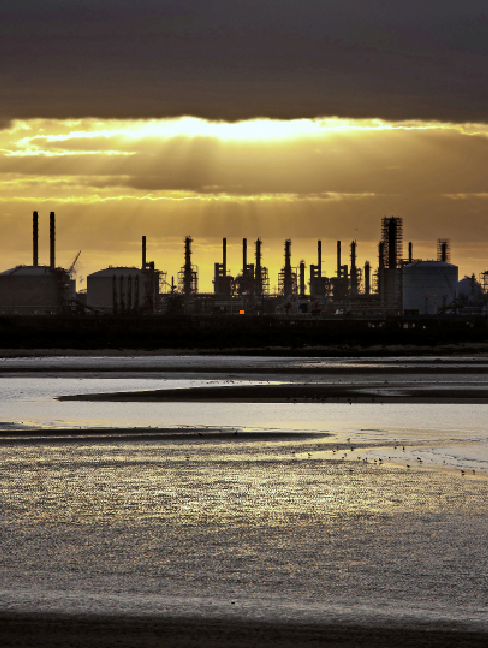
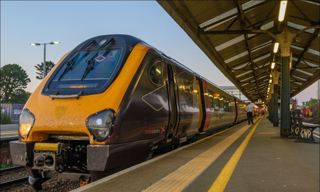
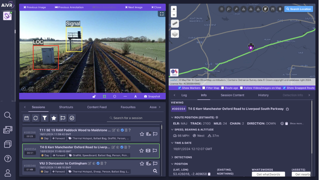
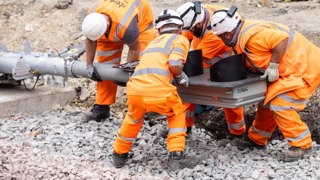
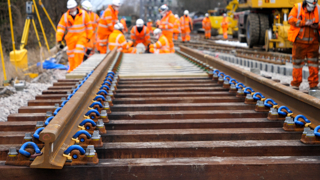










Login to comment
Comments
No comments have been made yet.